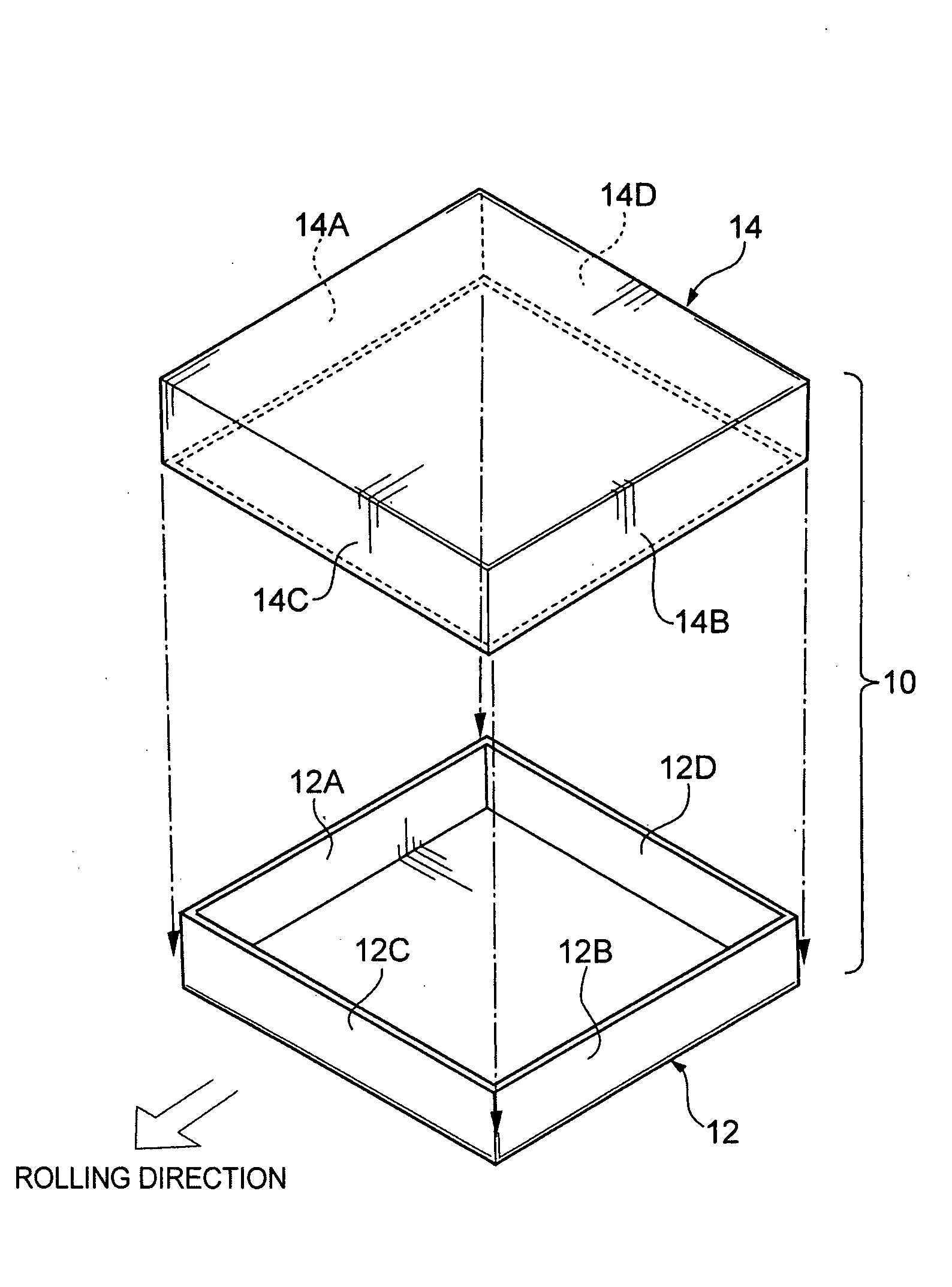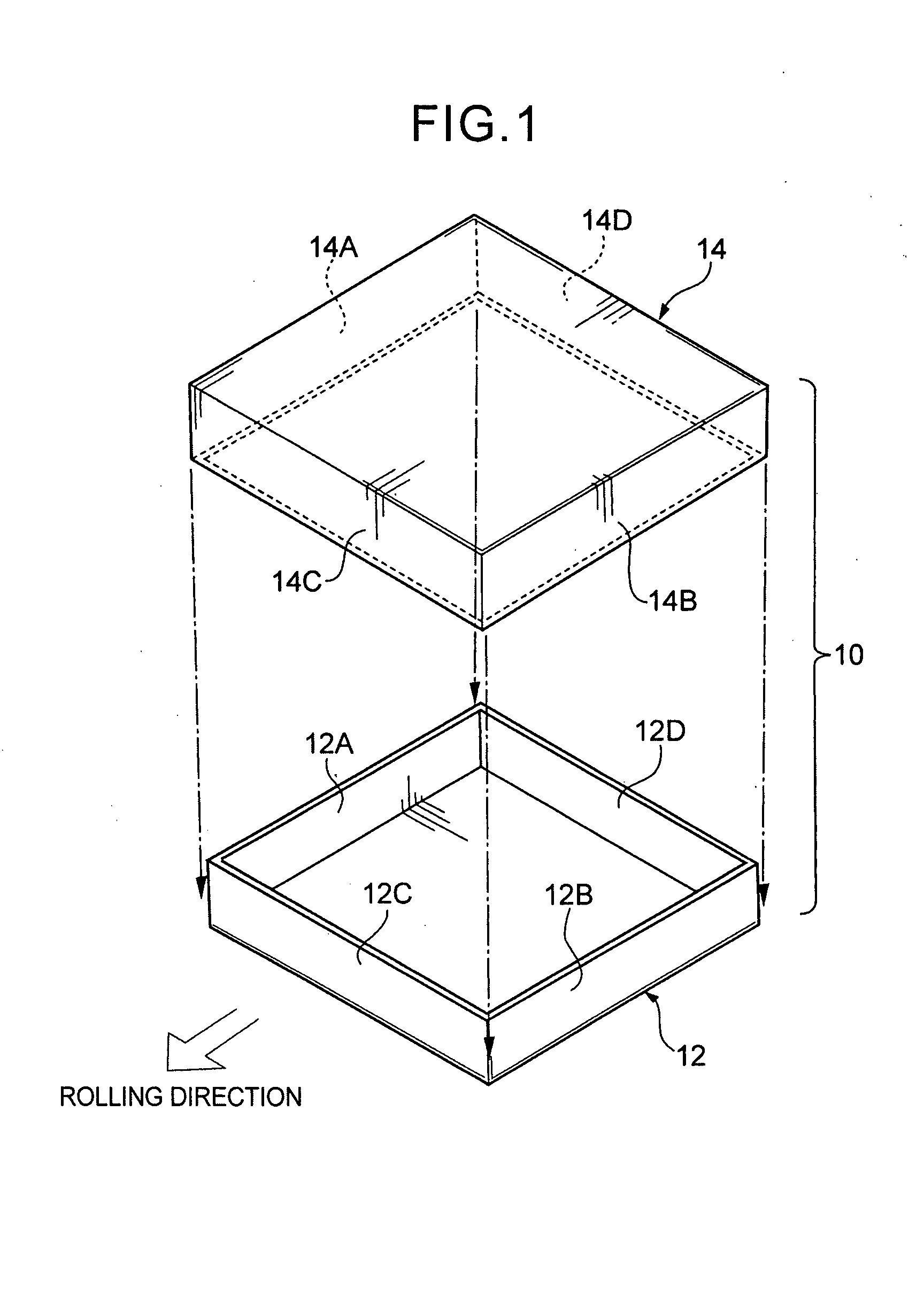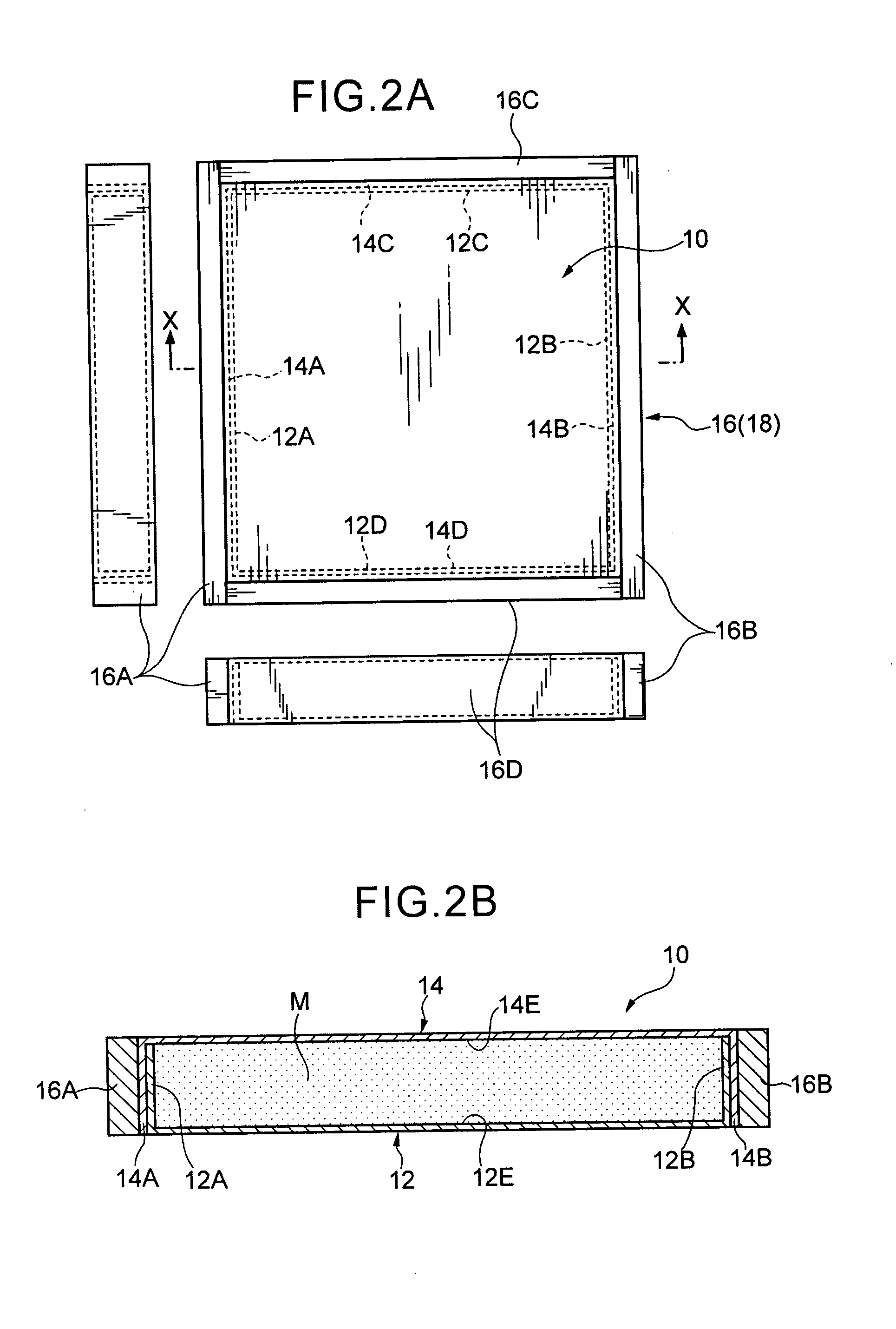Production method for metal matrix composite material
a metal matrix and composite material technology, applied in the direction of coatings, etc., can solve the problems of significant deterioration in sinterability and plastic workability, difficult or substantially impossible to roll cladded materials, and difficult or substantially impossible to roll them, so as to facilitate cold plastic work and high filling rate , the effect of enhancing the rollability
- Summary
- Abstract
- Description
- Claims
- Application Information
AI Technical Summary
Benefits of technology
Problems solved by technology
Method used
Image
Examples
first embodiment
[0043]The following description will be made about raw materials and then about the production process, in a method according to a first embodiment of the present invention.
[0044](1) Raw Materials
[0045]Aluminum Powder Serving as the Matrix
[0046]In a preferred embodiment, an aluminum powder serving as a matrix is made of an Al based alloy, specifically an aluminum alloy defined as A 1100 by JIS (or AA 1100 by A.A.). More specifically, the aluminum powder comprises 0.25 weight % or less of silicon (Si), 0.40 weight % or less of iron (Fe), 0.05 weight % or less of copper (Cu), 0.05 weight % or less of manganese (Mn), 0.05 weight % or less of magnesium (Mg), 0.05 weight % or less of chromium (Cr), 0.05 weight % or less of zinc (Zn), 0.05 weight % or less of vanadium (V) and 0.03 weight % or less of titanium (Ti), with the remainder being aluminum (Al) and inevitable impurities.
[0047]The aluminum powder in the present invention is not limited to the above specific composition. For exampl...
example 1
[0104]A B4C ceramic powder was uniformly mixed with an aluminum alloy powder having a composition as shown in Table 1, in an amount of 35 mass %, to prepare a mixed powder M. Then, a lower casing 12 made of an aluminum alloy (JIS A5052P) and formed in an approximately rectangular parallelepiped shape having outside dimensions of 367.7 mm on a side in square-shaped top and bottom surfaces, and 31.6 mm in height, and a wall thickness of 1.6 mm was prepared. Further, an upper casing 14 made of an aluminum alloy (JIS A5052P) and formed in an approximately rectangular parallelepiped shape having outside dimensions of 370.9 mm on a side in square-shaped top and bottom surfaces, and 33.2 mm in height, and a wall thickness of 1.6 mm was prepared. The aluminum alloy (JIS A5052P) had a tensile strength of 195 MPa.
TABLE 1SiFeCuMnMgCrZnVTiAl0.25%0.40%0.05%0.05%0.05%0.05%0.05%0.05%0.05%remainderor lessor lessor lessor lessor lessor lessor lessor lessor less
[0105]Two aluminum plates each formed t...
example 2
[0111]In order to clarify an optimal range of the width of the reinforcing frame 16, in addition to the reinforcing frame 16 in the Example 1 having a width of 20.0 mm, five types of reinforcing frames 16 were prepared by changing only the width to 5 mm, 10 mm, 15 mm, 30 mm and 40 mm. Except for this change, the product was made under the same conditions as those in the Example 1. Each of the prepared reinforcing frames 16 was welded to the pre-rolling assembly 18 to prepare five types of samples, and each of the samples was subjected to rolling in the same manner.
[0112]Further, an additional five types of reinforcing frames 16 were prepared by changing the material of the reinforcing frame 16 in the Example 1 to an aluminum alloy (JIS A6063) and then changing only the width to 5 mm, 10 mm, 15 mm, 30 mm and 40 mm. Except for these changes, the product was made under the same conditions as those in the Example 1. Each of the prepared reinforcing frames 16 was welded to the pre-rollin...
PUM
| Property | Measurement | Unit |
|---|---|---|
| temperature | aaaaa | aaaaa |
| temperature | aaaaa | aaaaa |
| temperature | aaaaa | aaaaa |
Abstract
Description
Claims
Application Information
 Login to View More
Login to View More - R&D
- Intellectual Property
- Life Sciences
- Materials
- Tech Scout
- Unparalleled Data Quality
- Higher Quality Content
- 60% Fewer Hallucinations
Browse by: Latest US Patents, China's latest patents, Technical Efficacy Thesaurus, Application Domain, Technology Topic, Popular Technical Reports.
© 2025 PatSnap. All rights reserved.Legal|Privacy policy|Modern Slavery Act Transparency Statement|Sitemap|About US| Contact US: help@patsnap.com



